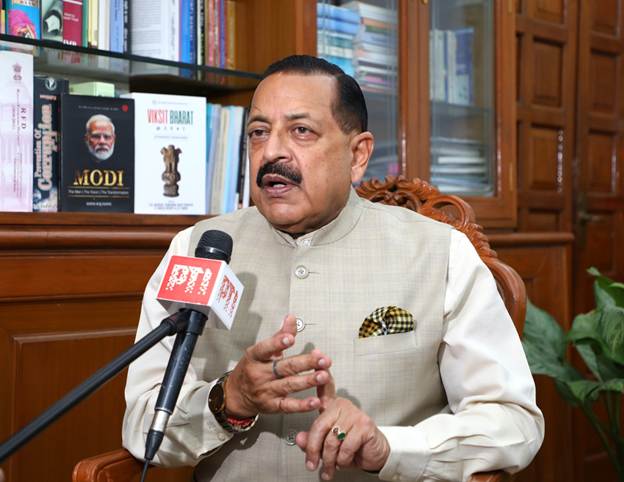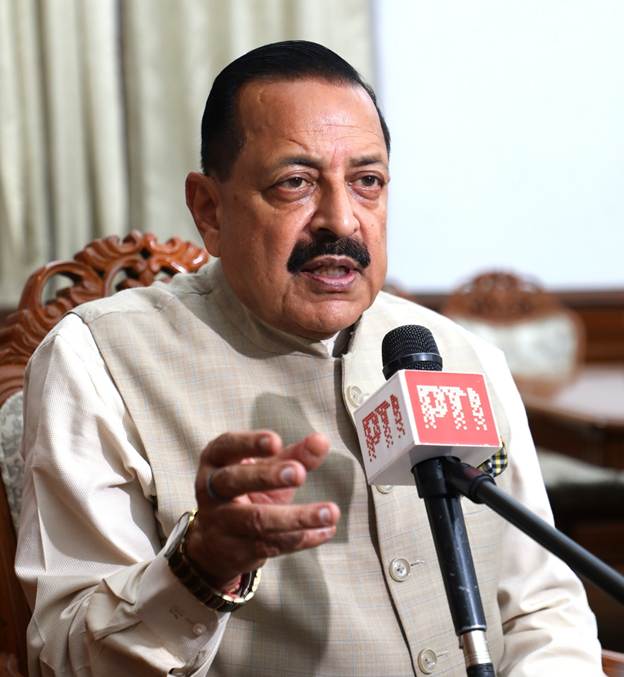“Indian Astronaut Grp Capt. Shubanshu Shukla to Study physical, cognitive and physiological responses in Space, as also the Cognitive Impact of continuous Electronic Displays in Microgravity” says Union Minister Dr. Jitendra Singh
“Indian Astronaut Grp Capt. Shubanshu Shukla to Study physical, cognitive and physiological responses in Space, as also the Cognitive Impact of continuous Electronic Displays in Microgravity” says Union Minister Dr. Jitendra Singh
NEW DELHI, June 3 : Union Minister of State (Independent Charge) for Science & Technology, Minister of State for Prime Minister’s Office, Personnel, Public Grievances, Pensions, Atomic Energy and Space, Dr. Jitendra Singh, today announced that Group Captain Shubhanshu Shukla will study physical, cognitive and physiological responses in Space as also the impact of utilizing continuous electronic displays in microgravity, an important aspect for future long-duration space missions during an interview to media agency.
MoS Space shared that the Indian astronaut’s research will also focus on skeletal muscle dysfunction in space and the evaluation of therapeutic strategies to counter these effects.
In addition, he shared that Gaganyatri Shukla will carry out experiments on the revival, survival, and reproduction of extremophiles such as Tardigrades. These micro-organisms, known for their resilience in extreme conditions, will help advance scientific understanding of life sustainability beyond Earth.

Highlighting the mission’s significance, the Minister stated “It is a matter of national pride that an Indian astronaut is an active participant with defined scientific responsibilities in this international mission.”
Group Captain Shukla is one of the four astronauts selected for India’s first human space mission Gaganyaan, alongside Prasanth Nair, Angad Pratap, and Ajit Krishnan. Gp Capt. P.B. Nair has been named as the designated backup for the Axiom-4 mission.
He shared that discussions on sending an Indian astronaut to ISS were also part of Prime Minister Narendra Narendra Modi’s visit to the United States. The enabling policies since 2014 have allowed unprecedented access to Sriharikota for citizens, and have catalyzed India’s leadership in NewSpace initiatives.
Speaking about India’s first human spaceflight mission Gaganyaan, Dr. Singh said trial phases are currently underway, and the mission is targeted for early 2027. He described such space experiments as game-changers for India’s space ecosystem, emphasizing that these will help the country become truly Atmanirbhar in the space domain.
Dr. Jitendra Singh reiterated that India’s space economy is projected to increase five-fold from USD 8 billion to USD 44 billion in the near future, in line with the vision of Viksit Bharat @2047. He said the year 2014 was a turning point for India’s space journey, when Prime Minister Shri Narendra Modi took a bold decision to unlock the space sector, paving the way for private sector participation, FDI, and enhanced international collaboration.
Dr. Singh also spoke about the Government’s commitment to human exploration of both space and deep ocean. He noted that India’s marine economy, despite vast coastal resources, remains underexploited, and the Deep Ocean Mission aims to harness this potential.

Referring to India’s nuclear energy strategy, the Minister said the sector has received enhanced budgetary allocation, with the development of Bharat Small Modular Reactors underway to support the nation’s clean energy transition and meet Net Zero goals by 2070.
On civil aviation, Dr. Jitendra Singh said air travel has become accessible to the common citizen under Prime Minister Modi’s leadership, with multiple new airports inaugurated and growing demand for pilots. To address this, CSIR-NAL has developed a two-seater trainer aircraft, and work is ongoing to scale up production of the Electric Hansa (e-Hansa) in collaboration with the private sector.
In conclusion, Dr. Jitendra Singh emphasized that these developments represent a new era of Indian scientific advancement, with meaningful participation in global space missions, and a clear trajectory toward self-reliance and leadership in critical technology sectors.